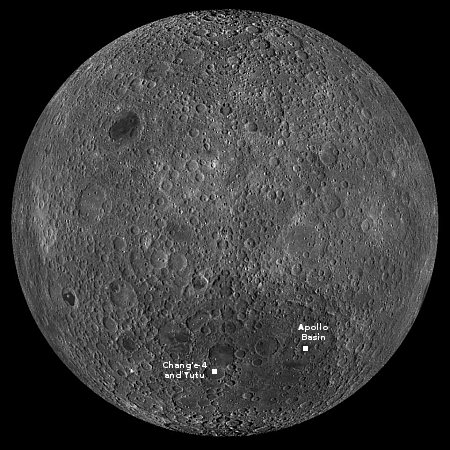Paul Davis – I go Crazy
An evening pause: Performed live on television, probably sometime in the 1970s.
Hat tip Diane Zimmerman.
An evening pause: Performed live on television, probably sometime in the 1970s.
Hat tip Diane Zimmerman.

One of many sudden public collapses.
Click for full video.
An op-ed today in the New York Post tried to explain why the medical and health community lost the confidence of so much of the public after the COVID epidemic. According to Marc Siegal, a doctor and news pundit (or as described in his bio line at the end of the essay, “a clinical professor of medicine and medical director of Doctor Radio at NYU Langone Health and a Fox News medical analyst”), the distrust was caused by the effort of the Biden administration to force the COVID jab on everyone through mandates while squelching any dissent or discussions of potential risks.
To Siegal, this effort to make believe the jab carried no risks at all was seen from the start as a lie, and has since been proven so. Better to have been honest from the start, Siegal says, so that patients could make up their own minds with all the facts in hand.
The way Siegal couches his language in his op-ed, however, only increases this distrust.
» Read more
On Christmas Eve 1968 three Americans became the first humans to visit another world. What they did to celebrate was unexpected and profound, and will be remembered throughout all human history. Genesis: the Story of Apollo 8, Robert Zimmerman's classic history of humanity's first journey to another world, tells that story, and it is now available as both an ebook and an audiobook, both with a foreword by Valerie Anders and a new introduction by Robert Zimmerman.
The print edition can be purchased at Amazon or any other book seller. If you want an autographed copy the price is $60 for the hardback and $45 for the paperback, plus $8 shipping for each. Go here for purchasing details. The ebook is available everywhere for $5.99 (before discount) at amazon, or direct from my ebook publisher, ebookit you don't support the big tech companies and the author gets a bigger cut much sooner.
"Not simply about one mission, [Genesis] is also the history of America's quest for the moon... Zimmerman has done a masterful job of tying disparate events together into a solid account of one of America's greatest human triumphs."--San Antonio Express-News

Click for full resolution version of panorama. For the original images, go here, here, and here.

Cool image time! The panorama above was created from three pictures taken on Februay 13, 2024 by the left navigation camera on the Mars rover Curiosity (available here, here, and here). It looks to the north, across Gale Crater and its nearest rim, about twenty miles away. The red dotted line indicates the approximate route Curiosity took to get to this point. The yellow lines on the overview map to the right show the approximate area covered by the panorama.
The images were part of the routine mosaics created by both the left and right navigation cameras for helping engineers plot the rover’s future travels. The pictures that look back at the far rim however also provide important atmospheric data. In this case, the haze tells the scientists how much dust is in the atmosphere. It is presently winter in Gale Crater, which also corresponds to the dust storm season. Thus, the view is very hazy.
Curiosity will likely remain at this location for several more weeks, as the science team is about to begin another drilling campaign. Note the large dark area on the cliff face on the right that is also level with the terrace where Curiosity presently sits. The scientists want to get core data of this layer, and they think they are at a good spot to do so.

Nova-C is Odysseus’s landing spot
NASA has now announced its planned live stream coverage of tomorrow’s landing attempt of Intuitive Machine’s Odysseus lunar lander near the south pole of the Moon.
Intuitive Machines is targeting no earlier than 5:49 p.m. EST Thursday, Feb. 22, to land their Odysseus lunar lander near Malapert A in the South Pole region of the Moon.
Live landing coverage will air on NASA+, NASA Television, the NASA app, and the agency’s website. NASA TV can be streamed on a variety of platforms, including social media. Coverage will include live streaming and blog updates beginning 4:15 p.m., as the landing milestones occur. Upon successful landing, Intuitive Machines and NASA will host a news conference to discuss the mission and science opportunities that lie ahead as the company begins lunar surface operations.
No live stream is of course active yet. When it goes live tomorrow afternoon I will embed the youtube broadcast here on Behind the Black.
If successful, Odysseus will be the first American landing on the Moon since the manned Apollo missions more than a half century ago. It will also mark the first successful lunar landing achieved by a privately-built spacecraft. Companies from Israel, Japan, and the U.S. have already tried and failed.
Now available in hardback and paperback as well as ebook!
From the press release: In this ground-breaking new history of early America, historian Robert Zimmerman not only exposes the lie behind The New York Times 1619 Project that falsely claims slavery is central to the history of the United States, he also provides profound lessons about the nature of human societies, lessons important for Americans today as well as for all future settlers on Mars and elsewhere in space.
“Zimmerman’s ground-breaking history provides every future generation the basic framework for establishing new societies on other worlds. We would be wise to heed what he says.” —Robert Zubrin, founder of the Mars Society.
All editions are available at Amazon, Barnes & Noble, and all book vendors, with the ebook priced at $5.99 before discount. All editions can also be purchased direct from the ebook publisher, ebookit, in which case you don't support the big tech companies and the author gets a bigger cut much sooner.
Autographed printed copies are also available at discount directly from the author (hardback $29.95; paperback $14.95; Shipping cost for either: $6.00). Just send an email to zimmerman @ nasw dot org.

The high altitude balloon company Space Perspective yesterday unveiled the test balloon capsule, dubbed Excelsior, which it plans to use for a program of ten flights beginning this year, prior to beginning manned flights on its Neptune manned capsule, shown in the graphic to the right.
Neptune is designed to take eight passengers to altitudes of twenty miles for several hours, not quite space but high enough to see the curvature of the Earth. The company had said in 2022 it would begin commercial flights by the end of 2024, but it now says it is targeting 2025.
Florida-based Space Perspective is one of two American companies attempting to fly high altitude balloon flights for tourists, with Tucson-based World View the other. There is presently no word when World View will begin its first manned flights.
India’s space agency ISRO today announced that it has completed engine tests of the upper stage engine of its LVM rocket, a variation of its GSLV rocket and its most powerful, that will be used on its Gaganyaan manned orbital mission presently scheduled for launch in 2025.
In order to qualify the CE20 engine for human rating standards, four engines have undergone 39 hot firing tests under different operating conditions for a cumulative duration of 8810 seconds against the minimum human rating qualification standard requirement of 6350 seconds.
Before the 2025 manned mission, ISRO plans four more launch abort tests (one has already taken place) and three unmanned Gaganyann orbital demo missions. Two of those unmanned demo flights are scheduled for this year.
Leaving Earth: Space Stations, Rival Superpowers, and the Quest for Interplanetary Travel, can be purchased as an ebook everywhere for only $3.99 (before discount) at amazon, Barnes & Noble, all ebook vendors, or direct from my ebook publisher, ebookit.
If you buy it from ebookit you don't support the big oppressive tech companies and I get a bigger cut much sooner.
"Leaving Earth is one of the best and certainly the most comprehensive summary of our drive into space that I have ever read. It will be invaluable to future scholars because it will tell them how the next chapter of human history opened." -- Arthur C. Clarke
According to the rocket startup Firefly, a software issue prevented the engine on the upper stage of its Alpha rocket from firing its final burn, leaving a Lockheed Martin satellite in the wrong orbit.
In a Feb. 20 statement, Firefly said an error with the guidance, navigation and control (GNC) software for the upper stage of the Alpha on the company’s “Fly the Lightning” mission Dec. 22 kept the upper stage from firing as planned to circularize its orbit. That left the upper stage and its payload, a Lockheed Martin technology demonstration satellite, in an orbit with a low perigee.
The investigation, which included the company’s own mishap team as well as an independent review, found that the error in the GNC software algorithm “prevented the system from sending the necessary pulse commands to the Reaction Control System (RCS) thrusters ahead of the stage two engine relight.” Firefly didn’t elaborate on the issue, but the RCS thrusters likely would have been used to ensure the stage was in the proper orientation and to settle its tanks so propellant would flow from them into the engine.
From this description it appears the attitude thrusters (RCS) had not worked correctly, and this made it impossible for the main engine to fire, either because the computer sensed it was in the wrong orientation, or its fuel could not flow properly to the engine.
The company says it has made corrections, and still expects to launch four times this year.
SpaceX today successfully launched an Indonesian communications satellite into orbit, its Falcon 9 rocket lifting off from Cape Canaveral.
Indonesia’s reasons for buying SpaceX’s launch services are explained here. The first stage completed its 17th flight, landing on a drone ship in the Atlantic.
The leaders in the 2024 launch race:
16 SpaceX
8 China
2 Iran
2 Russia
2 Japan
2 India
2 Rocket Lab
American private enterprise now leads the entire world combined in successful launches 19 to 16, with SpaceX now tied 16 to 16 with the entire world combined (excluding American companies).
An evening pause: Performed live on television in 1973. Back then, a song like this was entirely okay for a mainstream band to perform and mainstream TV show to air. Today, such songs are put into a “Christian music” ghetto, regardless of their quality.
Hat tip Judd Clark.
Cool image time! The picture to the right, rotated, cropped, reduced, and sharpened to post here, was taken on December 23, 2023 by the high resolution camera on Mars Reconnaissance Orbiter (MRO).
The image shows us the north interior rim of 7-mile-wide Niquero Crater on Mars. From the high to the low points the elevation difference is about 2,500 feet, with a steep downhill slope averaging about 18 degrees. The terrain appears to show several avalanche collapses that pushed lower material out of the way, though at the bottom where that material has been pushed aside there is no obvious large debris pile.
The science team labels this image simply “volatiles and gullies”, a label that carries a host of significant information. These gullies, which were among the earliest found by Mars Global Surveyor in the late 1990s, were the first evidence that the surface of Mars had a lot of near surface ice. It is for this reason that this relatively small crater on Mars has a name. Most craters this small remain unnamed, but the gullies on Niquero’s north slopes required more study, and thus the crater was given a name.
Subsequent orbital imagery has now shown that craters like Niquero, located in latitudes higher than 30 degrees, quite often are filled with glacial debris. In fact, the material that these avalanches pushed aside at the base of the slope is that glacial material, protected by a thin layer of dust and debris. The avalanche essentially disturbed that protected layer, and thus the debris pile (made up mostly of ice) sublimated away when warmed by sunlight. Thus. no big debris pile.
The gullies tend to be on the pole-facing slopes. Scientists believe they are the remnant evidence of ancient glaciers that grew on these slopes because they were protected from sunlight. In subsequent eons, when the climate on Mars changed, those glaciers collapsed, leaving behind the gullies we see now.
» Read more

Joe Biden at his February 2024 press conference
In the past two weeks the press has been buzzing about a report [pdf] by Justice Department special counsel Robert Hur, who decided he could not indict Joe Biden of criminal misuse of classified materials because Biden was “an elder man with poor memory.”
Biden then appeared to confirm Hur’s report with a press conference shortly thereafter, where he made false claims against the report, and acted exactly as a person with serious memory issues. For example, at one point he confused the leader of Egypt with that of Mexico.
What makes this media buzz laughable, especially coming from sources like CNN and the New York Times (the last two links above), is that these facts have been evident since 2020, well before Joe Biden was elected president. On October 26, 2020, just before the 2020 election, I wrote this column: “Joe Biden is just not qualified, for health reasons,” stating the following:
» Read more
According to an analysis of data from the space telescope Gaia, astronomers now believe that a 9,000-light- year-long stream of gas and dust that is only 500 light years away from the Sun at its nearest point ripples up and down like a wave, due to the Milky Way’s gravity.
Dubbed the Radcliffe Wave after the institute in which the astronomers were based who first discovered it, the scientists determined its wavelike behavior by mapping the motions of the star clusters along its length. Apparently, over time they are moving up and down, not unlike fans at a stadium doing the wave.
The data also includes these intriguing results:
“It turns out that no significant dark matter is needed to explain the motion we observe,” Konietzka said. “The gravity of ordinary matter alone is enough to drive the waving of the Wave.”
In addition, the discovery of the oscillation raises new questions about the preponderance of these waves both across the Milky Way and other galaxies. Since the Radcliffe Wave appears to form the backbone of the nearest spiral arm in the Milky Way, the waving of the Wave could imply that spiral arms of galaxies oscillate in general, making galaxies even more dynamic than previously thought. “The question is, what caused the displacement giving rise to the waving we see?,” Goodman said. “And does it happen all over the galaxy? In all galaxies? Does it happen occasionally? Does it happen all the time?”
That no dark matter is involved causes a lot of problems for the hypothesis that such material exists, causing the motions of stars in the outer regions all galaxies to orbit the galaxy faster than they should. Why would dark matter cause that increased rotation, but have no impact on this wave? It is a paradox that is not easily resolved.
India has now considering adding its own helicopter to its next Mars mission, dubbed the Martian Boundary Layer Explorer (Marble).
While ISRO’s rotorcraft is still in the conceptual stage, the agency envisions a drone that can fly as high as 100 meters in the thin Martian air. Along with the Marble instrument suite, the drone is expected to carry various sensors, including temperature, humidity, pressure, wind speed, electric field, trace species, and dust sensors.
Whether this mission will include a lander, rover, or orbiter as well is very unclear, which suggests strongly the entire mission profile is presently very much undecided as yet.
Link here. The article describes not only how Elon Musk and SpaceX persuaded the Indonesian government to buy Falcon 9 launches and introduce Starlink into its country, it describes how a Chinese launch failure contributed as well.
When a Chinese rocket malfunctioned shortly after launch in April 2020, destroying Indonesia’s $220 million Nusantara-2 satellite, it was a blow to the archipelago’s efforts to strengthen its communication networks. But it presented an opportunity for one man. Elon Musk – the owner of SpaceX, the world’s most successful rocket launcher – seized on the failure to prevail over state-owned China Great Wall Industry Corp (CGWIC) as Jakarta’s company of choice for putting satellites into space.
The most fascinated aspect of the article for me however was its effort to create a sense that the U.S. government dislikes SpaceX’s independence.
But the U.S. government and military are concerned about their reliance on SpaceX, especially given Musk’s muscular business style, according to one current and one former U.S. official working on space policy. While legacy U.S. defence contractors like Boeing and Lockheed Martin typically consult the State Department before making foreign deals, Musk and SpaceX dealt directly with Jakarta, the two officials said.
…Nicholas Eftimiades, a former U.S. intelligence officer and expert on Chinese espionage operations at the Atlantic Council, a Washington-based think tank, said SpaceX’s CEO had ruffled some feathers in the U.S. capital: “Elon Musk does things his way and some officials don’t like that”.
The only Pentagon official quoted however had nothing negative to say about SpaceX.
It is likely there are officials in the Pentagon who want SpaceX to crash and fail, especially considering the full court press by many agencies against SpaceX since Biden became president. It is also likely that Reuters, which published this article, wants that full court press to succeed, and is eager to spin any SpaceX success badly, if it can. In general today mainstream press sources like Reuters operate as arms of the Democratic Party. If Biden wants SpaceX killed, so will Reuters.
No matter. The article can’t help describing why SpaceX is successful. It competes aggressively, and wins customers because it produces products that work, reliably.

The Australian rocket startup Gilmour Space has now raised $36 million in private investment capital in its most recent fund-raising round. The company had previously raised $46 million.
The funding supports the small launch vehicle startup’s campaign to manufacture, test and begin launching rockets and satellites from the Bowen Orbital Spaceport in North Queensland.
Gilmour Space, founded in 2012, is developing a three-stage rocket called Eris. The first Eris test flight is expected “in the coming months, pending launch approvals from the Australian Space Agency,” according to the Gilmour Space news release. A second test flight is expected later this year and commercial launches are scheduled to begin in 2025. [emphasis mine]
The map to the right shows both the location of Gilmour’s Bowen launch site, but also that of Equatorial Launch Australia (ELA), which is building a spaceport open to all rocket companies.
Gilmour had originally announced plans for an April 2023 launch. Though it is not surprising for a new rocket company to experience delays in developing a new rocket, the highlighted phrase in the quote above, which has appeared in a previous story in September 2023 about the delays at Gilmore, strongly suggests Australia’s government might be a problem as well. Its legal framework is strongly influcenced by Great Britain’s, which has turned out to be a nightmare for both rocket companies and spaceports. That approvals have been pending now for many months is further evidence this is so.
Yury Borosov, the head of Roscosmos, the agency that controls all of Russia’s aerospace industry, announced today that it intends to complete 40 launches in 2024.
“Over 40 [space launches]. However, plans always remain just plans. Last year, we also planned a large number of launches. But, unfortunately, we could not implement the launch program in full due to some objective circumstances,” the Roscosmos head said.
Roscosmos took efforts last year and keeps taking them this year to ensure the smooth joint operation of its enterprises, Borisov stressed. “This is being done to rule out delays. The main task for this year is to fulfil the entire launch program,” the Roscosmos chief said.
The last time Russia completed 40 launches in a single year was 1994. Since 2015, when SpaceX essentially began full launch operations and began taking away its share of the commercial launch market, Russia has struggled to manage 20 launches a year. Furthermore, since 2022 and its invasion of the Ukraine, it has lost almost all of its remaining international customers. Unless its military has suddenly found money to increase its launch rate significantly, Borosov’s prediction seems absurd. Nor is there any reason to believe Russia’s government has the cash to increase its military launch rate.
Note too that the year is already seven weeks old, and Russia has only launched twice. At that pace it will only launch about 12 times this year.

Banned on campuses nationwide
The modern academic racist bureaucracy that is usually called “Diversity, Equity, and Inclusion” (DEI) attempts over and over again to gaslight us into believing its goal is to welcome everyone. For example, on Yale’s DEI webpage is this statement in outlining its “Belonging” program:
Advancing Yale’s mission in vibrant community life, in which members encounter and appraise a broad array of ideas, are treated with dignity and respect, and feel welcome to make their voices heard;
Nothing about Yale’s belonging program however encourages free expression, and in fact it works agreesively to discourage it. On a related DEI webpage, it states the following about free expression:
» Read more

Cool image time! The picture to the right, cropped and enhanced to post here, was taken on October 9, 2023 by the high resolution camera on Mars Reconnaissance Orbiter (MRO), and shows what appear to be the somewhat typical terrain at this location, in a part of the giant Martian canyon Valles Marineris dubbed West Candor Chasma. For example, I featured similar swirls in August 2022 at a place only about six miles to the east, that spot indicated by the green dot on the overview map above. The white dot marks the location of today’s image.
So, what are we looking at? The elevation drop from the high and low points is only about 180 feet, but in that short distance it appears there are more than two dozen visible layers, and those layers form terraces that alternate between bright and dark material.
The shape of the swirls also suggest that a flow of some kind, either water, ice, or wind, moved from the northwest to the southeast, carving these terraces as it descended the stair steps downward. It is also just as likely that we are seeing repeated lava flows going downhill to the southeast, each even laying another layer on top of the preceeding one. And it is also possible that we are looking at a combination of both.
The alternating dark and light layers suggest that each dark layer was an event that put down dark material, such as volcanic dust, that was subsequently covered with light material, with this process repeating itself many times over the eons.
That the floor of this part of Valles Marineris is uniquely covered in this manner is in itself intriguing. Why here, and not elsewhere within the canyon?
Capitalism in space: The European Space Agency (ESA) today awarded the Spanish launch startup PLD a €1.3 million contract to develop a payload deployment system for its Miura-5 orbital rocket, expected to make its first launch in 2025.
Designed to release all types of satellites with as much flexibility as possible, the payload system – called MOSPA for Modular Solution for Payload Adapter – will allow PLD Space to offer its customers a wider range of missions and services, including accommodation of CubeSats, nanosatellites and microsatellites. The development of the modular payload adapter will be done in partnership with OCCAM Space. The goal is to create the hardware to be as light as possible while also being as adaptable as possible to launch more satellites and meet market demands.
“PLD space has proven itself with its first launch last year, and we look forward to seeing the experience applied to the Miura 5 launch services development,” says ESA’s Jorgen Bru, “The payload adapter development engaged today was chosen to increase market competitiveness and ensure that many different types of satellites and customers can fly.”
This contract once again signals ESA’s shift from depending solely on its own launch company, Arianespace, to instead obtaining launch contracts from as many private, independent, and competing European companies as possible. Arianespace, for many reasons (some not its fault), failed to develop rockets capable of competing with SpaceX, and also failed to get them developed on time. ESA presently has no launch capability, and has had to sign contracts with SpaceX to get its payloads into orbit.
The shift is ground-shaking. It suggests that in the next two decades Europe should have a half dozen competing rocket companies of its own, all striving for business and thus all working hard to come up with ways to reduce launch costs. Under the Arianespace monopoly, little innovation took place, launch costs never dropped, and though for many years it controlled a majority of the launch market, it could never make a profit.
Rocket Lab today successfully launched a commercial test mission of commercial space junk removal satellite, dubbed ADRAS-J and built by the Japanese company Astroscale, in partner with Japan’s space agency JAXA. It is designed to demonstrate the ability to make a close rendezvous of a large piece of space junk and then photograph and inspect it closely to determing it precise condition to facilitate later removal efforts.
The leaders in the 2024 launch race:
15 SpaceX
8 China
2 Iran
2 Russia
2 Japan
2 India
2 Rocket Lab
A lot of launch entities grouped at 2. Expect Iran and Japan to fall away as Russia, India, and Rocket Lab continue to launch regularly this year, with Russia and Rocket Lab eventually outpacing India.
American private enterprise now leads the entire world combined in successful launches 18 to 16, with SpaceX still trailing the entire world combined (excluding American companies) 15 to 16.
Japan and India today completed launches of different rockets, one on its first successful test launch.
First, early this morning Japan’s new H3 rocket successfully reached orbit for the first time, on its second attempt. The first attempt had problems, first with a launch abort at T-0 when the solid-fueled strap-on boosters failed to ignite. On the launch attempt the upper stage failed. Today’s launch was a complete success, placing a dummy payload into orbit.
Japan’s space agency JAXA however needs to learn how to run a launch in a professional manner. Minutes prior to launch an announcer began a second-by-second countdown, and continued this for minutes after the launch. Not only was this unnecessary and annoying, it made the real updates impossible to hear. India used to do this in its first few live streams, but quickly recognized the stupidity of it. In addition, the person translating the updates clearly knew nothing about rocket launches, so her translations were tentative and often completely misunderstood what had just happened.
All of this makes JAXA look like a second rate organization, which might also help explain its numerous technical failures in recent years.
About twelve hours later, at mid-day in India, India’s space agency ISRO successfully launched its GSLV rocket, placing a commercial radar environmental satellite into orbit.
The leaders in the 2024 launch race:
15 SpaceX
8 China
2 Iran
2 Russia
2 Japan
2 India
American private enterprise still leads the entire world combined in successful launches 17 to 16, with SpaceX trailing the entire world combined (excluding American companies) 15 to 16.
Embedded below the fold in two parts.
To listen to all of John Batchelor’s podcasts, go here.
» Read more
An evening pause: Performed by the BBC Concert Orchestra. I think this makes for a good way to start the weekend. If you have time, get the movie and watch it. One of the greatest ever made.
Hat tip Doug Johnson.

What the modern college education is becoming: “But
Brawndo’s got what plants crave. It’s got electrolytes!”
Because of an approximate 10% drop in enrollment since 2017, the University of North Carolina at Greensboro has now announced major cuts to many academic programs, while leaving untouched its many racially-based programs.
Five majors are being completely eliminated, according to a recent announcement from Chancellor Franklin Gilliam: anthropology, geography, physics, physical education and religious studies. Three language minors — Chinese, Russian, and Korean — are also on the chopping block. The university is also ending 12 graduate programs and is pausing admissions in its masters drama program.
These cuts were detailed in an announcement by the university’s chancellor, Franklin D. Gilliam, Jr. Interestingly, his announced cuts left entirely untouched the small Diversity, Equity, and Inclusion (DEI) office is he runs from within his office. Nor did the cuts include the university’s Office of Intercultural Engagement, which appears entirely focused on favoring the queer agenda and students who advocate it. The cuts also left intact the college’s black studies and its women’s, gender, and sexuality departments, both of which might be popular but neither contribute much to providing students a real education.
» Read more
Cool image time! The picture above, brightened slightly to post here, was taken on February 15, 2024 by the right navigation camera on the Mars rover Curiosity. It looks east at the looming cliff face of the mountain Kukenan that the rover has been traveling beside for the last six months. On the overview map to the right the yellow lines indicate roughly the area covered by this picture. The blue dot marks Curiosity’s present position, while the green dot marks its position on February 5, 2024. As you can see, the rover is making slow but steady progress uphill into Gediz Vallis.
This image illustrates the alien landscape of Mars quite beautifully. First, there is absolutely no life in this picture. On Earth you would be hard pressed to find any spot on the surface that doesn’t have at least some plant life.
Second, there is the rocky layered nature of this mountain. When the Curiosity science team first announced its future route plans (the red dotted line) to drive into this canyon back in 2019, the orbital images of these layers from Mars Reconnaissance Orbiter (MRO) had suggested the terrain here would be reminiscent of The Wave in northern Arizona, a smooth series of curved layers smoothed nicely over time by the wind.
As you can see, there is no smoothness here. Instead, every single layer here is infused with broken rock, suggesting that each layer is structurally weak. As erosion exposes each, the layer breaks up, crumbling into the chaos in this picture. The curved nature of the terrain at the bottom of the picture however does suggest that some sort of flow once percolated down this canyon, either liquid water or glacial ice, carving the layers into this curved floor.
With the FAA finally giving its okay (six months late), Rocket Lab has now begun the orbital maneuvers required to bring Varda’s small manufacturing capsule back to Earth at the Utah test range.
For more than eight months in space, Rocket Lab’s 300kg-class spacecraft has successfully provided power, communications, ground control, and attitude control to allow Varda’s capsule to grow Ritonavir crystals, a drug commonly used as an antiviral medication for HIV and hepatitis C.
Due to the initial planned reentry date being adjusted from late 2023, Rocket Lab’s spacecraft has been required to operate for more than double its intended orbital lifespan, which it has done without issue.
If all goes as planned, the capsule will land on February 21, 2024. Whether those drugs are still viable and sellable remains unknown. The delay due to government red-tape might have made them useless.
Nonetheless, a success in recovering those samples, viable or not, would establish Varda’s business plan. With three more missions planned, all to be launched and controlled by Rocket Lab, it will be positioned well for the future, its capsule a method for manufacturing a number of products in weightlessness that are needed on Earth but can only be made in space.
The fake kerfuffle in the past few days about a so-called new “serious national security threat” from Russia’s space capabilities is simply the Washington swamp suddenly discovering capabilities that Russia has had for decades and has been working to improve repeatedly, discovered suddenly and pushed in our state-run press (the Washington Post, the New York Times, the Guardian, NBC, the Associated Press, ) to help that swamp lobby for passage of the Senate foreign aid bill, that spends $90 billion for the military and for the Ukraine, Taiwan, and Israel.
The key facts are highlighted below in this quote from the Washington Post propaganda piece about this story:
Exactly what the new Russia weapon is remains unclear, but the system is a “serious national security threat,” in the words of U.S. Rep. Michael R. Turner (R-Ohio), chairman of the House Intelligence Committee. “I am requesting that President Biden declassify all information relating to this threat so that Congress, the Administration, and our allies can openly discuss the actions necessary to respond to this threat,” Turner wrote in a statement Wednesday.
In his briefing to reporters Thursday, [White House spokesman John] Kirby would say only that the system is “an antisatellite capability that Russia is developing.” [emphasis mine]
My heart be still. Lordy, the Russians are developing an anti-sat capability! Will wonders never cease.
This is not news. There is nothing here that we haven’t known about the Russian anti-satellite efforts now for decades. Turner and the White House are simply pushing this story now to create a crisis and panic to force the House to approve the Senate bill, even though there is great opposition to it. That opposition sees the bill has spending billions to protect other countries, while doing nothing to protect our own.
Sadly, we are ill-served by our modern press in this manner, which is all-in on this propaganda.
India’s space agency ISRO yesterday successfully deorbited its defunct Cartosat-2 satellite, using the satellite’s leftover fuel to bring it down in a controlled manner, about three decades sooner than its orbit would have decayed naturally.
The satellite was launched in 2007 to provide detailed ground images of India, and completed its mission in 2019. As noted in ISRO’S press release:
ISRO opted to lower its perigee using leftover fuel to comply with international guidelines on space debris mitigation. This involved reducing collision risks and ensuring safe end-of-life disposal, following recommendations from organizations like the United Nations Committee on the Peaceful Uses of Outer Space (UN-COPOUS) and the Inter-Agency Space Debris Coordination Committee (IADC).
While such actions are a good thing, that governments in India and Europe are suddenly making a big deal about it now — after almost 3/4s of a century of inaction — is not for those reasons, but to lay the political groundwork for allowing the international community, led by the UN, to impose new regulations on all space efforts, both government and private.
Be warned. They are the government, and they are here to help you.

The Moon’s far side. Click for interactive map.
China is now working to a May 2024 launch of its Chang’e-6 lunar sample return mission to bring back about four pounds of material from the far side of the Moon.
The map to the right, created from a global mosaic of Lunar Reconnaissance Orbiter (LRO) imagery, shows the planned location of Chang’e-6’s landing site, in Apollo Basin. The landing site of China’s previous mission to the Moon’s far side, Chang’e-4 and its rover Yutu, is also shown. Both are still operating there, since landing five years ago on January 2, 2019.
Chang’e-6’s mission will be similar to China’s previous lunar sample mission, Chang’e-5, which included a lander, ascender, orbiter, and returner. It launched in November 23, 2020, landed a week later, and within two days grabbed its samples and its ascender lifted off. The samples were back on Earth by December 16, 2020.
There are indications however that Chang’e-6 might spend more time on the surface before its ascender lifts off with samples.